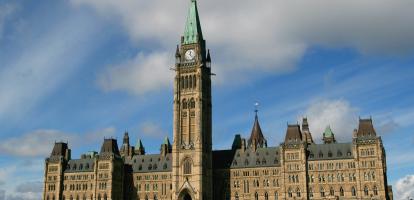"The federal budget implies cuts to the government’s payroll. Is that forecast serious? If it is, what’s the plan?"
Surging transfer payments financed by unprecedented borrowing have dominated the fiscal headlines since the spring of 2020. By contrast, the sharp run-up in Ottawa’s operating costs since 2014 has hardly registered. As the pandemic recedes and its fiscal aftermath comes to dominate policy discussions, Ottawa’s burgeoning overhead — mainly due to compensation — will come under close scrutiny. As in the proverb, after seven fat years, seven lean years loom.
If not for the distraction of the pandemic, which allowed the government to get away with not presenting a budget in 2020, Ottawa’s surging operating and employment costs would have attracted attention by now. In the 2014/15 fiscal year, federal expenses other than transfer payments came to $81.6 billion. That was almost unchanged from four years earlier, reflecting the Harper government’s repair of federal finances after the 2008-09 crisis and recession.
In the following year, however, federal overhead surged and the trend since then has been sharply upward. The 2021 budget forecast total operating costs of $134.7 billion for the current fiscal year. Exclude one-time spending on vaccines and protective equipment spelled out in the budget and they come to $126.3 billion. That is up 55 per cent from 2014/15. Over the same period the CPI rose just 12 per cent. Readers who think the volume and quality of federal services are more than 40 per cent higher than in 2014/15 might see that jump in costs as reasonable. Others will see it as confirmation that the past seven years have been fat ones in Ottawa.
Federal operating expenses include many things, such as heating, lighting and maintenance of buildings, depreciation and travel, but more than half of it is payroll plus employee benefits such as health care and pensions. An unhelpful change in Ottawa’s presentation of some of its pension costs understates its total compensation bill. But adding up everything else — wages and salaries, annual benefit accruals, and employer contributions to CPP, QPP and EI — reveals a seven-year surge.
Spending on those components of compensation totalled $39.3 billion in 2014/15. For 2021/22 it’s forecast to be $64.0 billion, an increase of almost two-thirds — and more than one-half in real terms — over the seven years. Some of this increase reflects the impact of lower interest rates on the accrual cost of future benefits to employees and some of it would be COVID-related expenses other than those detailed in the budget. But even if those items came to $5 billion, the seven-year increase in compensation would still be 50 per cent. It is no insult to the talent and professionalism of federal employees to ask if the services they provide are really that much better now than they were seven years ago.
Looking ahead, the 2021 budget suggests a sharp shift from fat to lean. It shows operating costs, excluding the extraordinary COVID expenses, falling 7.7 per cent in 2022/23, with a cumulative further decline of 3.5 per cent between then and 2025/26. In real terms, that would leave Ottawa’s overhead about 10 per cent above its 2014/15 level — a number we can hope improvements in federal services by then will justify.
The budget says nothing, however, about how the government will achieve this — to use a word we are supposed to dread — austerity. It forecasts smaller costs for pensions and other benefits, but those reflect higher interest rates, not tough decisions by the finance minister and her colleagues. (Indeed, the promises made to new, better paid federal employees during the seven fat years are eating into those savings.) In any event, those smaller costs are nowhere near enough to explain the overall decline in operating costs.
Because compensation does account for more than half of every dollar of federal operating costs, that big a reduction in overhead implies lower payroll. Figures from the federal Treasury Board Secretariat show full-time-equivalent employment this year that is up 16 per cent from 2014/15, but will fall five per cent from now to 2023/24. That would be quite a reversal. It has not figured in speeches by the finance minister or prime minister. It is an unlikely plank in any federal party’s platform for the next election.
Canadians need more information from the federal government about why its operating costs are up so much and how it plans to bring them down. Are extraordinary COVID expenses bigger than the budget showed? Do the recent fall and expected rise of interest rates explain more of the recent rise and expected fall in benefit costs than government documents reveal? Above all, are the government’s projections credible?
Ottawa has enjoyed seven fat years. Leaner years are coming, whoever forms the next government. The federal budget implies cuts to the government’s payroll. Is that forecast serious? If it is, what’s the plan?
William Robson is CEO of the C. D. Howe Institute, where Alexandre Laurin is Director of Research.





